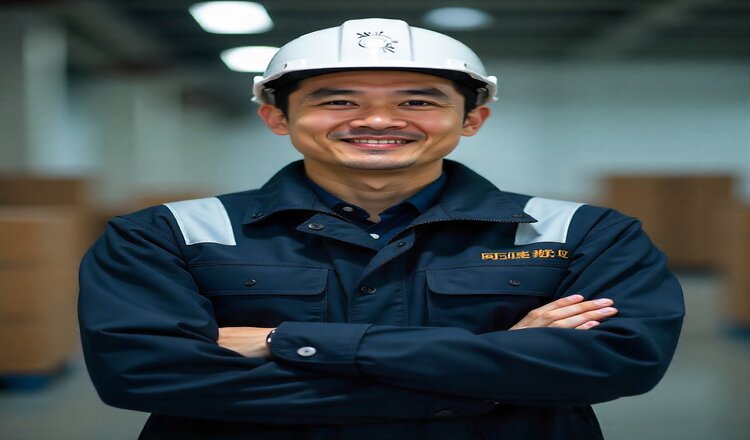What Is a Permit to Work System and Why It’s Essential for Workplace Safety
October 25, 2025 | by IoT Development Company

Workplace safety is not just about following rules — it’s about protecting lives, equipment, and the environment from preventable hazards. One of the most effective tools used by organizations to ensure safety during high-risk activities is the Permit to Work (PTW) system. Whether you’re in construction, manufacturing, or oil and gas, a well-implemented PTW system minimizes risks and ensures that tasks are carried out under strict safety controls.
Understanding how this system works is crucial for every safety professional or team leader. Through OSHA training online or an official training program, workers can gain a solid understanding of how permits to work operate and why they are a cornerstone of effective safety management.
What Is a Permit to Work System?
A Permit to Work (PTW) system is a formal written procedure that ensures certain types of work are performed safely and with proper authorization. It acts as a control measure for high-risk jobs such as hot work, confined space entry, electrical maintenance, or work at height.
The system ensures that before any hazardous work begins:
- The risks are properly assessed.
- Necessary precautions are in place.
- Everyone involved understands their responsibilities.
In simple terms, a PTW system is a documented agreement between those who request work, those who perform it, and those who oversee safety.
Why Is the Permit to Work System Important for Workplace Safety?
Without a permit system, workers may perform unsafe tasks unknowingly or fail to coordinate with others, leading to accidents or even fatalities. The PTW system serves several critical functions:
- Prevents unauthorized work: Only trained and approved personnel can carry out specific high-risk activities.
- Ensures coordination: It promotes communication between departments and supervisors.
- Reduces human error: Clear documentation ensures nothing is overlooked.
- Maintains legal compliance: Aligns with OSHA and other safety regulations.
- Promotes accountability: Each signatory is responsible for their part in ensuring safety.
For instance, imagine a maintenance team entering a confined space without knowing another team is performing welding nearby. The PTW system ensures both activities are coordinated, avoiding a potential disaster.
Types of Permits to Work
Every organization tailors its PTW system based on its operations. However, the most common types include:
- Hot Work Permit: For welding, cutting, or any work involving open flames or sparks.
- Cold Work Permit: For activities that do not generate heat or ignition sources.
- Confined Space Entry Permit: For entering tanks, vessels, or enclosed areas.
- Electrical Work Permit: For tasks involving energized electrical systems.
- Work at Height Permit: For tasks done above ground level.
- Excavation Permit: For digging or trenching operations.
Each permit clearly defines the hazards, control measures, and personnel authorized to perform the job.
How Does a Permit to Work System Operate?
The PTW process typically follows a structured sequence. Here’s a breakdown of the main stages:
1. Request for Work
The worker or supervisor identifies a task requiring a permit. A formal request is submitted detailing the work scope and potential hazards.
2. Risk Assessment
Before approval, hazards are analyzed, and suitable control measures are determined. This may involve safety officers who have completed OSHA training online or similar qualifications.
3. Permit Preparation and Approval
A competent authority prepares the permit, outlining safety measures, PPE requirements, isolation procedures, and emergency plans. It’s then reviewed and signed by the responsible person.
4. Work Execution
The permit holder performs the task strictly according to the outlined safety measures. Any deviation requires reauthorization.
5. Monitoring and Inspection
Supervisors continuously monitor the work to ensure compliance with the permit conditions.
6. Closure and Handover
Once the job is completed, the area is inspected, hazards are removed, and the permit is formally closed.
This systematic approach ensures every stage of hazardous work is carefully managed.
Benefits of Implementing a Permit to Work System
A strong PTW system brings measurable improvements to workplace safety. Some of the major benefits include:
- Enhanced hazard awareness among employees.
- Reduction in accidents due to better control of high-risk tasks.
- Improved safety culture as staff learn to follow structured safety processes.
- Legal protection for the company through documented compliance.
- Streamlined communication between departments and contractors.
When paired with an official training program, the PTW system helps teams work more confidently and safely, even in complex or high-pressure environments.
Common Mistakes in Permit to Work Systems (and How to Avoid Them)
Even a well-designed system can fail if it’s not implemented properly. Here are some common pitfalls:
- Incomplete risk assessments: Always ensure that all potential hazards are identified before issuing a permit.
- Poor communication: Workers should be briefed on permit conditions before starting any job.
- Permit misuse or duplication: Avoid using one permit for multiple unrelated tasks.
- Lack of training: Everyone involved should understand how to issue, use, and close permits safely.
- No follow-up inspections: Supervisors must verify that all safety measures remain in place.
Regular refresher training, such as through OSHA training online, can help prevent these mistakes and maintain compliance.
Step-by-Step Guide to Building an Effective Permit to Work System
Creating a reliable PTW system requires clear structure and management commitment. Follow these steps:
- Identify high-risk activities that require permits.
- Define responsibilities for issuing, authorizing, and executing permits.
- Develop standard permit templates for each type of work.
- Integrate hazard identification and control procedures.
- Train employees and contractors using an official training program.
- Monitor, audit, and review the system regularly to ensure effectiveness.
Real-Life Example: When a Permit System Saved Lives
At a chemical manufacturing plant, a maintenance crew planned to enter a reactor vessel for cleaning. Before starting, the supervisor followed the PTW process, which required atmospheric testing and ventilation. The test revealed toxic gas accumulation — preventing what could have been a fatal incident.
This example shows how the PTW system doesn’t just meet regulations — it actively saves lives.
Expert Tips for Maintaining an Effective Permit to Work Process
- Digitalize your PTW system: Use electronic systems for better tracking and accountability.
- Keep permits visible: Display them near the worksite for everyone’s awareness.
- Train regularly: Update employees’ skills with modern safety standards.
- Integrate with safety audits: Ensure permit compliance is part of regular inspections.
- Encourage feedback: Workers’ input can identify areas for improvement.
FAQs About Permit to Work Systems
What is the main purpose of a Permit to Work system?
It ensures that high-risk work is performed safely with proper authorization, supervision, and precautions in place.
Who is responsible for issuing a work permit?
Usually, a competent person such as a safety officer or supervisor trained through an official training program.
Do all jobs require a permit to work?
No. Only high-risk activities such as hot work, confined space entry, or electrical maintenance require permits.
How does OSHA relate to the PTW system?
OSHA guidelines emphasize hazard control and proper documentation, both of which are key elements of a PTW system.
Conclusion
The Permit to Work system is an essential safeguard in any workplace that handles hazardous or complex operations. It ensures that no work begins without full awareness, preparation, and authorization. When combined with OSHA training online or an official training program, organizations can significantly reduce accidents, strengthen safety culture, and maintain compliance with legal standards.
By understanding and applying this system correctly, you not only protect your workforce but also create a safer, more efficient, and responsible workplace — where every job is done with safety in mind.
RELATED POSTS
View all



